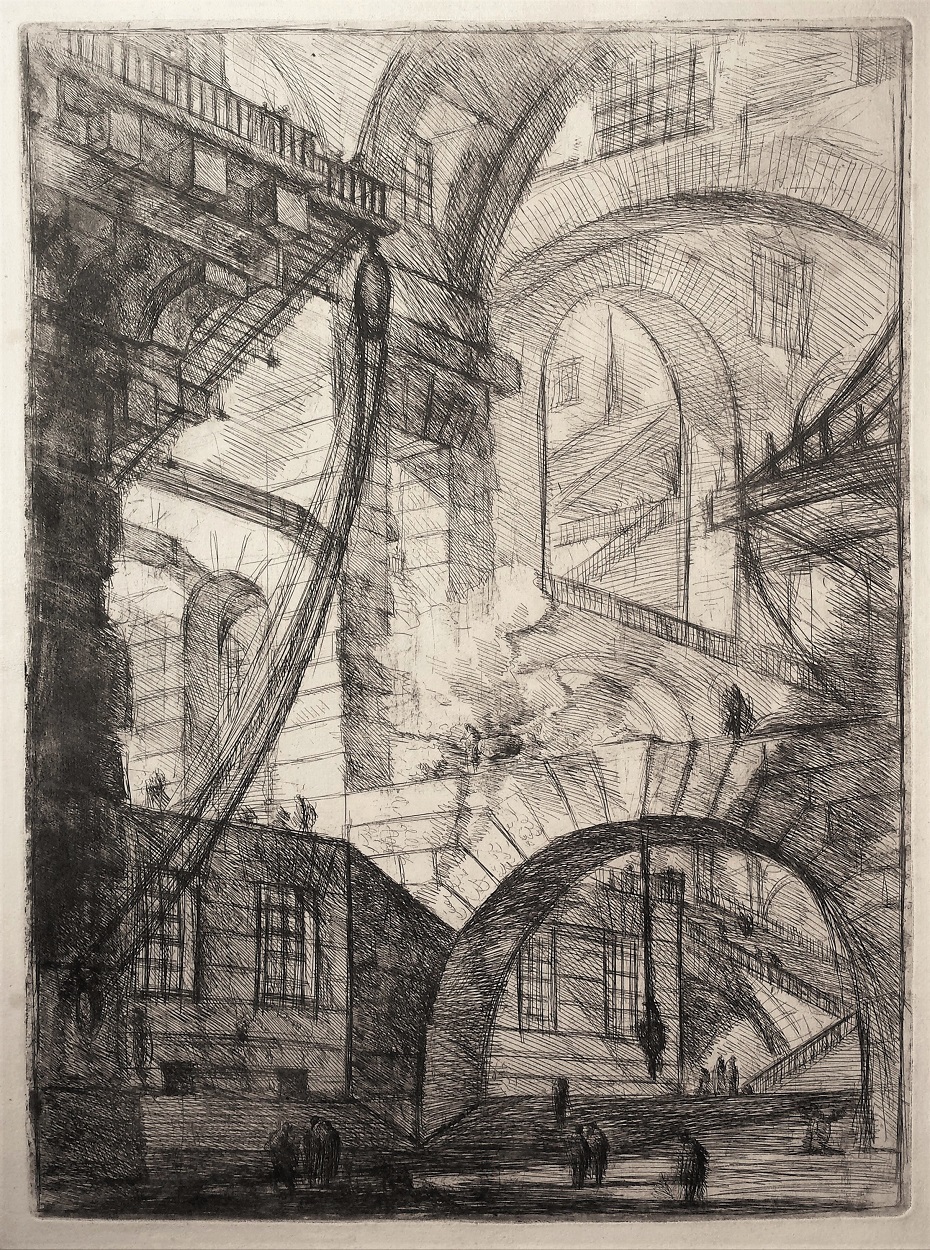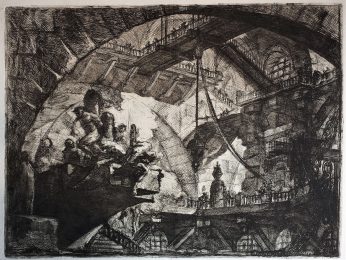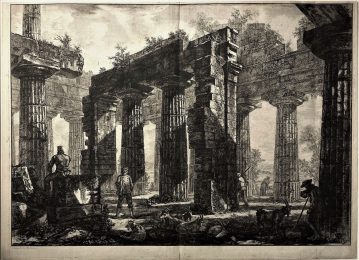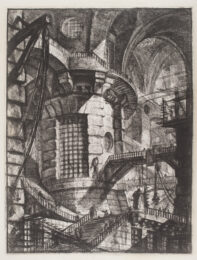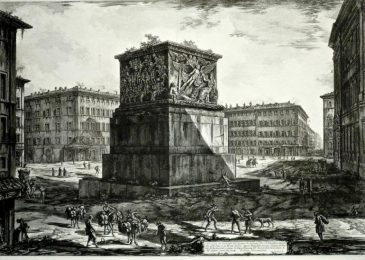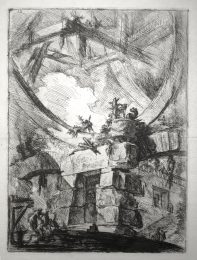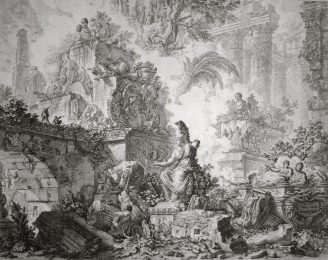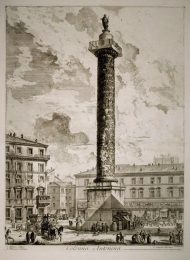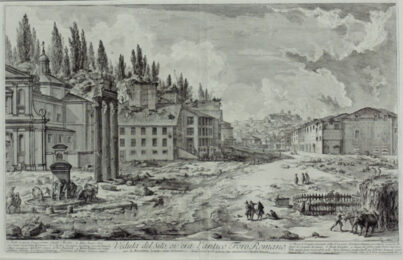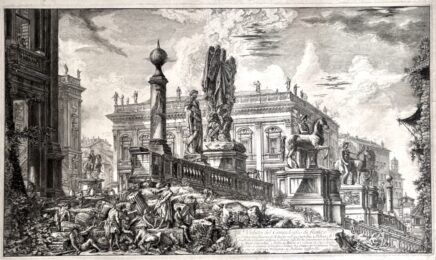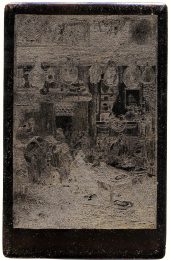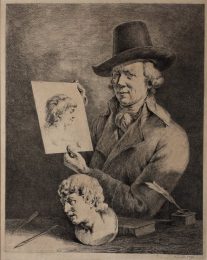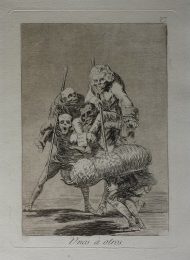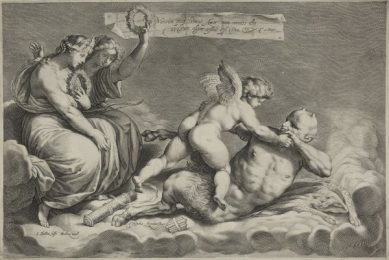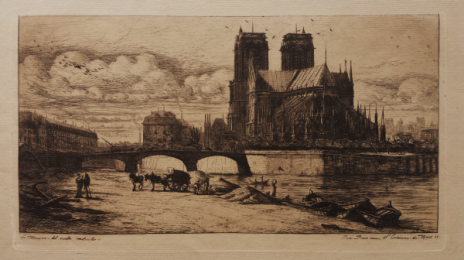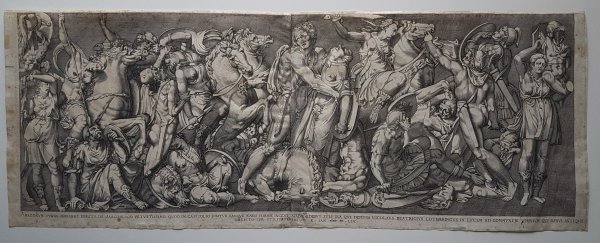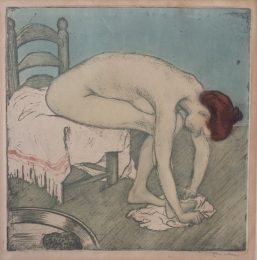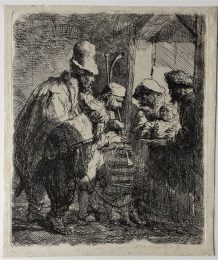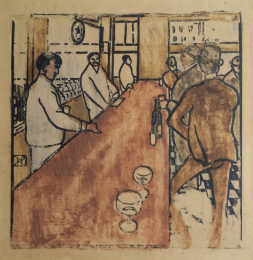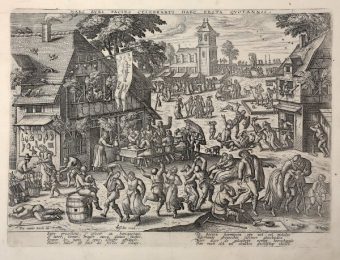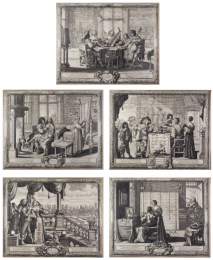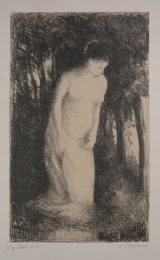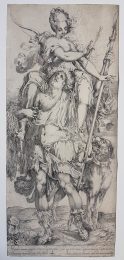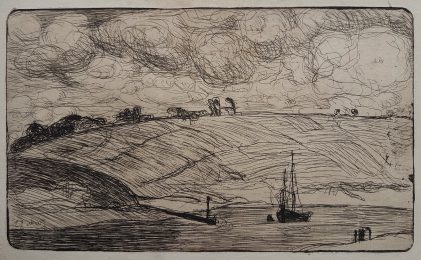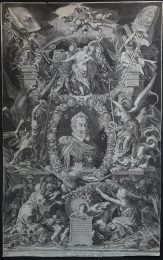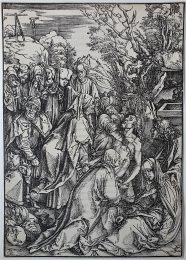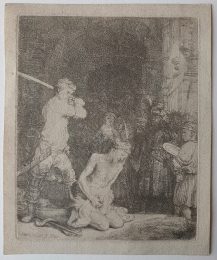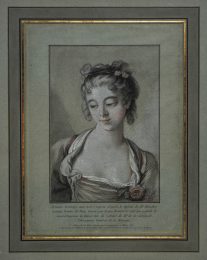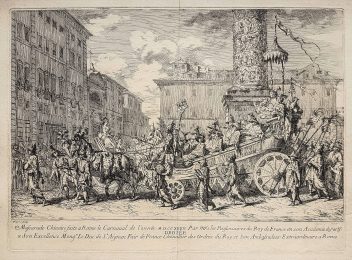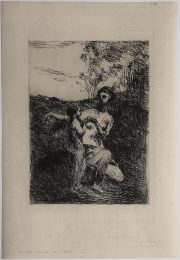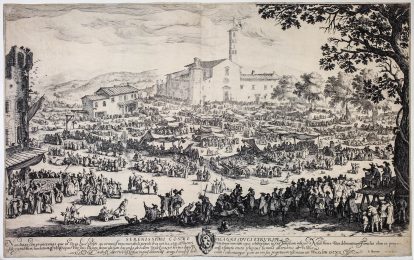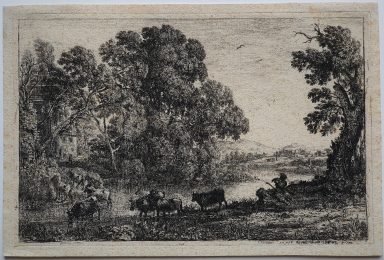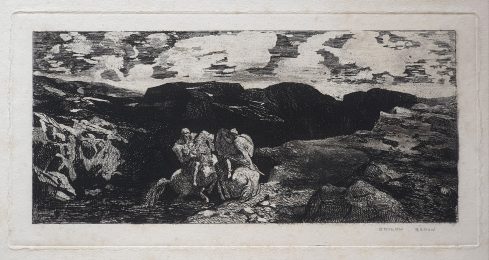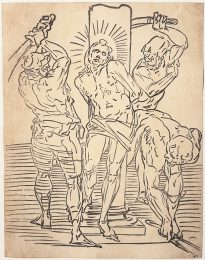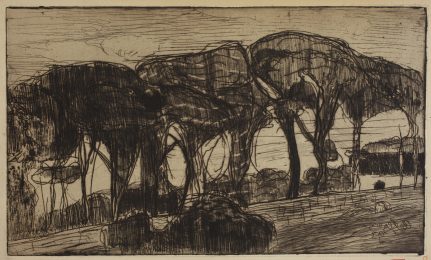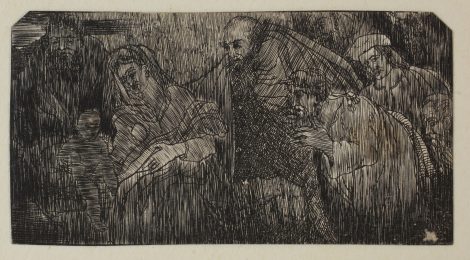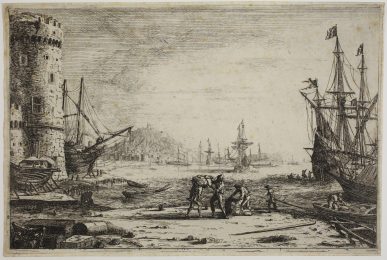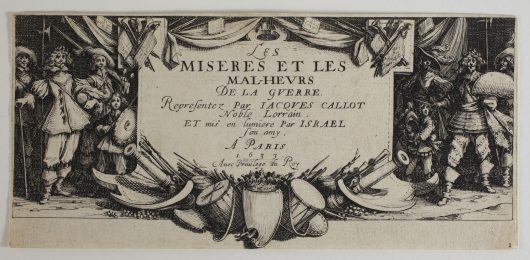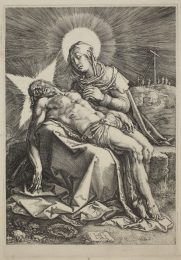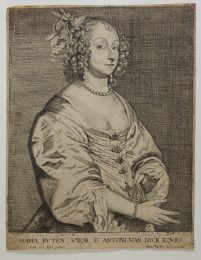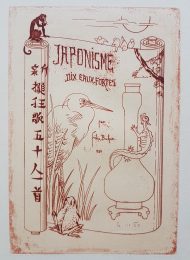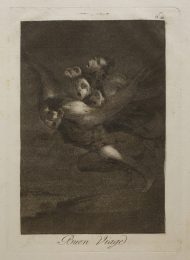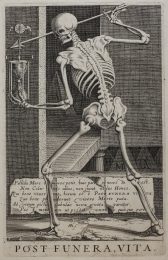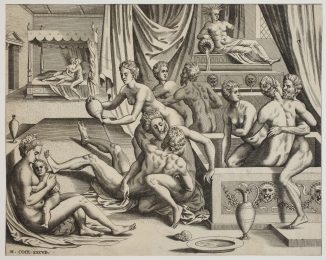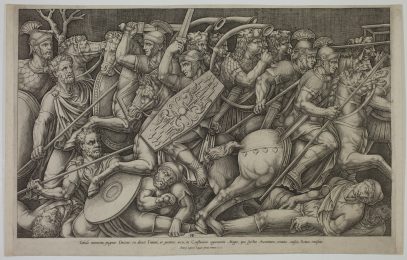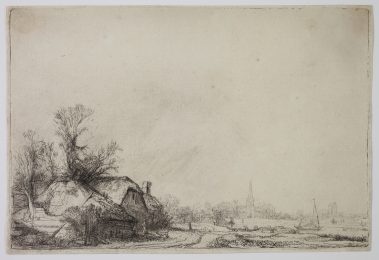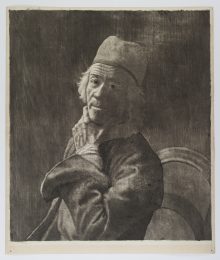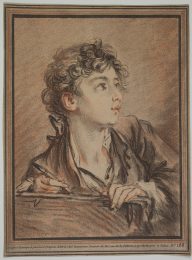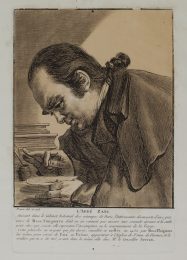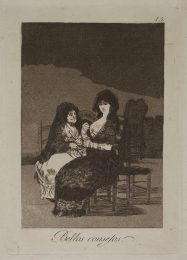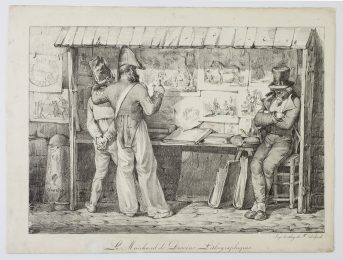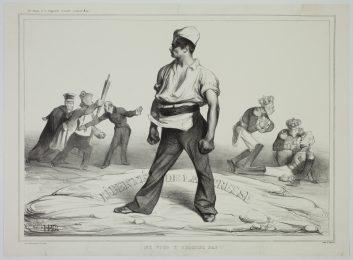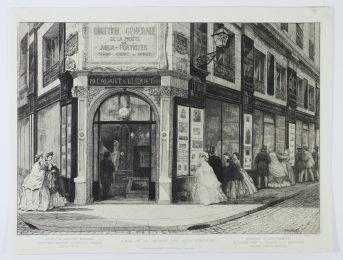Details — Click to read
Etching, engraving, sulphur tint or open bite, burnishing, 540 x 400 mm. Robison 32, 1st state (of 7), 1st edition (of 6); Focillon 29; Hind 6
Plate VI of Carceri d’Invenzione [‘Imaginary prisons’] or Invenzioni capric. di carceri [‘Fanciful Images of Prisons’].
Impression of the 1st state (of 7 according to Robison), the foreground floor empty except for human figures, before addition of some shading and numerous objects, including five round-topped stone pillars, and before the signature. First edition (1749-1760).
Very fine impression printed on laid watermarked paper (fleur-de-lys in a single circle, hard to see, probably Robison 5, ca. 1748-1760). Generally in good condition. Some slight soiling and a few tiny repaired tears in the margins. Two small foxmarks in the subject. Good margins (sheet: 643 x 522 mm).
In the preface to his catalogue raisonné, Andrew Robison observes that Piranesi was keen to rework his plates at regular intervals. That is the case of The Smoking Fire: Piranesi reworked the plate for the second edition of the Carceri in 1761. But this etching was itself a reworking: the source of the composition, according to Robison, was a plate in the very first series etched by Piranesi, the Prima Parte di Architetture, e Prospettive, published 1743. The third print in this series, called Carcere oscura, has a composition that is very close to The Smoking Fire: some details are almost identical, like the two large ropes dangling from a pulley on the left, or the lantern hanging under the arch to the right. Andrew Robison notes some significant differences between the two plates: “While many details are altered, the most interesting compositional change in The Smoking Fire is Piranesi’s inclusion of additional flights of stairs disappearing into far background space […]. Of course, [ …] the style of drawing in The Smoking Fire is radically different from that in the Carcere oscura, and Piranesi has also introduced a certain spatial ambiguity through the use of the characteristic smoke obscuring an architectural juncture which he developed in the Grotteschi.” (Early Architectural Fantasies, A catalogue Raisonné of the Etchings, 1986, p. 38).

